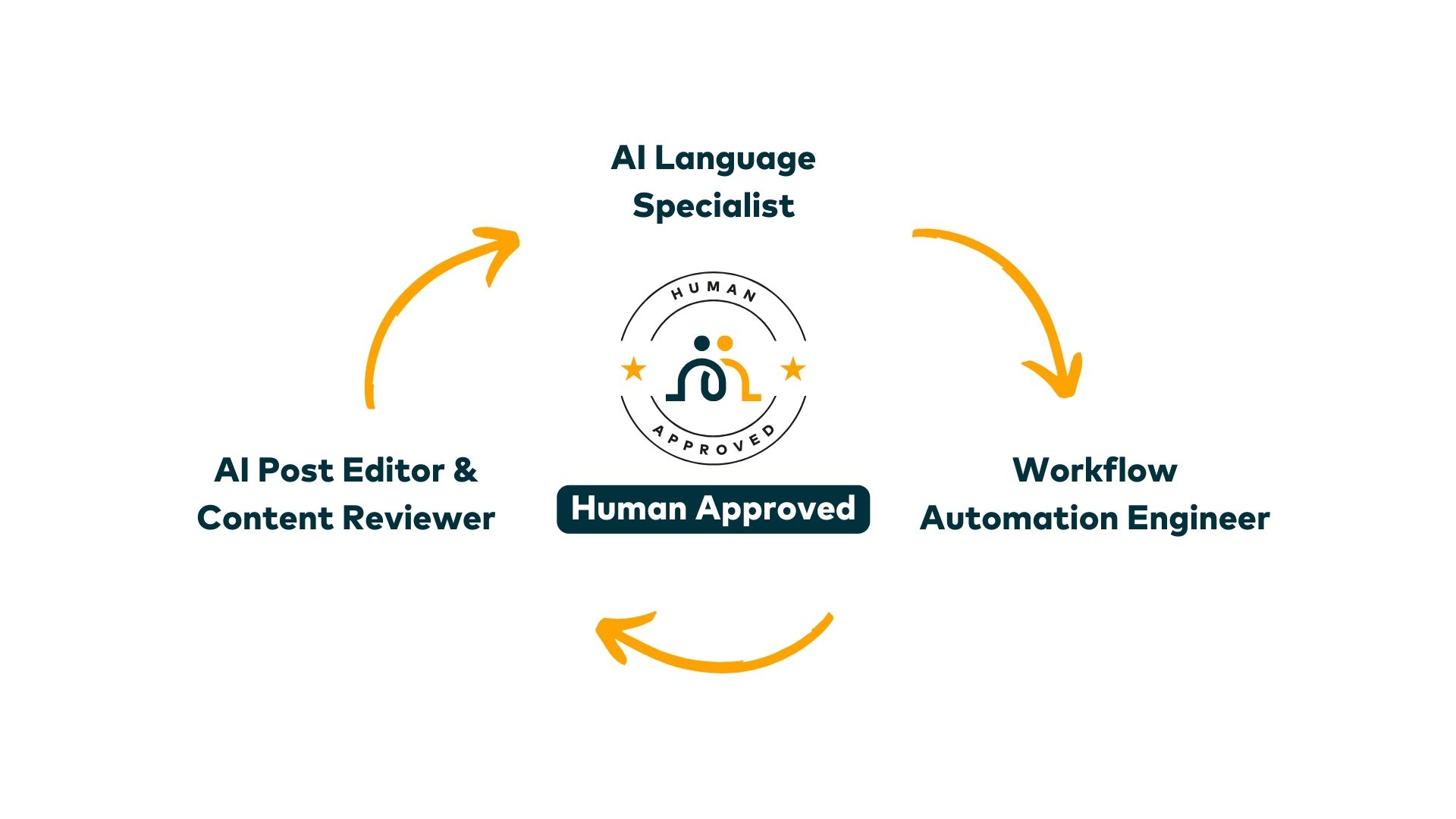- Home
- Resource Center
- Articles & Videos
- Merging Ethics and Technology – From Concept to Reality
20 May 2024
Merging Ethics and Technology – From Concept to Reality

What exactly is the Human Approved Certification?
The question of what the Human Approved Certification is, indeed, calls for interest and requires thorough explanation. It is a pioneer topic of ethical discussions in the merging of AI and language services. Why is it so critical? And why should it draw our attention? How does it differ from the human-in-the-loop practice? These questions are central to understanding the necessity of a practical response to the chaos brought by the large use of LLMs and generative AI models.
The concept at the foundation of the Human Approved initiative is, of course, the human-in-the-loop approach that requires the intervention of human professionals in tech-related tasks to support the machine when it comes to a standoff. However, if on one hand, the Human Approved is strictly linked to this practice, on the other hand it revolutionizes it and overturns it.
The main idea behind the Human Approved is that technology supports human beings, and not the other way around.
Not long ago, the concept of such disruption might have seemed elusive and intangible—mere "hot air," to be fair. Yet, as a language service provider in such a challenging time, we dove deep into the transformation and recognized the importance of adopting technology and innovating to survive and grow stronger. Delving into tech, once foreign to most of us, came across not only as a choice, but as a requirement for us to survive and advance. It's from this thirst for knowledge that we build on the Human Approved Certification.
Having a new disruptive idea is tough in a well-set industry, but when you come up with something truly new and original, that’s when you understand you’ve really broken new ground.
From the Idea to Its Implementation
The transition from the thought to the realization of this initiative has been anything but straightforward. As an Innovation Manager, the challenge of breaking away from the status quo to foster progress is not only a recurring theme, but the mantra of one’s everyday life. The Human Approved initiative put the team at the core of this transformation, striving to push the limits of what we think and what we can achieve. It has been our way of rioting, of saying that we are the value of language expertise.
We started from a tabula rasa, moved away from the standard concepts and processes we’ve gotten accustomed to: we embraced the lack of formal regulations and mostly our lack of knowledge as our starting point for growth, leading us to research, work and perform on self-taught expertise in hot topic areas to create something that is functional, efficient, and replicable.
At its heart, the Human Approved Certification outlines a new framework, important guidelines for the ethical engagement of professional linguists with AI pipelines. It documents the necessary steps for language products to achieve ethical compliance, integrating role descriptions, best practices, and scientific evaluation standards. In short, through detailed knowledge and research, it underscores the essential role of human oversight on AI workflows.
In the Human Approved pipeline, each step has its crucial role in guaranteeing a successful outcome that’s both qualitative and quantitative satisfying (see image). The cooperation of all professionals involved is central to the correct deployment of the workflow. The responsibilities, at each step, include but are not limited to:
- the analysis of the reference materials and the requests + the definition of the expected outcomes.
- the definition of the most appropriate tools.
- the prompt crafting, testing and validation.
- the scalability of the workflow, which justifies the implementation of an AI pipeline over the full-human option.
- the review of the AI text, the scientific evaluation of the output and the placing of the ideal stamp on the final output, as to say, “this could have been written from scratch by a human linguist”.
In this scenario, clients play a crucial role and are involved in each step of the process to guarantee transparency, alignment and workflow validation.
Learning and Adapting
The process of developing these guidelines has been and still is truly insightful. It has taught us priorities, the essential focuses for our ever-changing industry. Moving through 2024, we start receiving important evidence, from inside and outside, of the essentiality of linguists’ specialization in this new framework. The topic of education and training stands at the basis of our work: raising awareness about AI-generated text and empowering linguists to detect and address AI-specific nuances is vital. Adapting to roles like AI Post-Editors and AI Content Reviewers is not just necessary but it is, instead, the future of the profession, that must shape itself around its new AI fellow. For this reason, we are committed to fostering this environment of growth inside and outside our own Community.
Despite the progress, the stroll is still far-out. The foundation we've set is still evolving, and it is calling for continuous research, resources, and eagerness to embrace new perspectives. This endeavor is a dynamic, ever-expanding hazard that is reflecting the power of innovation in our industry.
So, is the Human Approved Certification merely “hot air”, or does it truly represent a practical step forward in our approach to language AI? It all goes down to how committed we are, all together, to bringing this vision to life. By encouraging continuous learning and flexibility, we can go beyond today’s challenges and craft together the future of our industry.
Do you want to contribute with an article, a blog post or a webinar?
We’re always on the lookout for informative, useful and well-researched content relative to our industry.

Marta Castello
Innovation Manager at Creative Words


